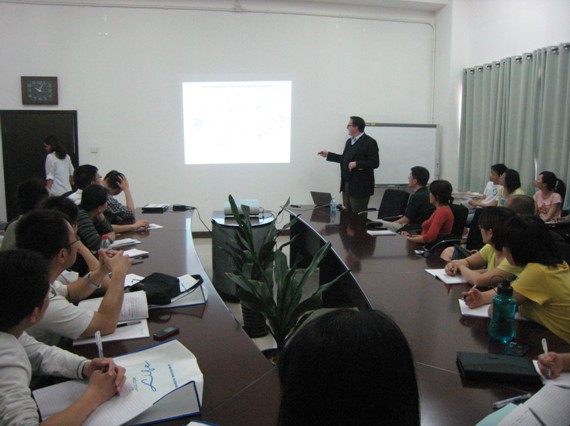A report on “Mapping and analysis of the human regulatory genome” was given by Doctor John A. Stamatoyannopoulos in Beijing Institute of Genomics (BIG), Chinese Academy of Sciences(CAS)on May 22, 2012. Dr John A. Stamatoyannopoulos introduced the latest research advances in his laboratory, including the mapping properties of DNaseI Hypersensitive Sites (DHSs) across the human whole genome by sequencing of various human cell lines, the relationship between DHSs and cis regulatory elements mainly including promoters and enhancers, the functions of DHSs in regulating gene transcription and expression, and the prediction of the functional consequences of disease-associated non-coding variation. The lecture was hosted by Prof. FANG Xiangdong, the principal investigator in BIG. Currently, John A. Stamatoyannopoulos is the director of the Northwest Reference Epigenome Mapping Center funded by the NIH Roadmap Epigenomics program and the UW ENCODE Project, and he is associate professor of Genome Sciences in University of Washington. John A. Stamatoyannopoulos’laboratory research mainly focuses on mapping and analysis of eukaryotic regulatory genomes and epigenomes through the application of novel molecular and computational technologies. A major ongoing effort has been to delineate the cis-regulatory architecture of human and mouse genes and to predict the functional consequences of disease-associated non-coding variation. Presently, Dr John A. Stamatoyannopoulos and Dr FANG’s group are collaborating on the project “Epigenetics mechanism of the erythroid differentiation” and the project has made great advances so far, which will benefit the abilities of processing and analyzing massive biological information in Dr FANG’s group through the international cooperation and communication. Dr John A. Stamatoyannopoulos was delivering a speech in BIG. (Image by Zhang Zhaojun) Contact : Prof. FANG Xiangdong Email: fangxd@big.ac.cn
